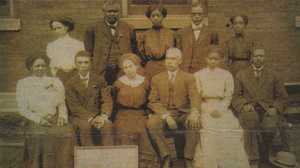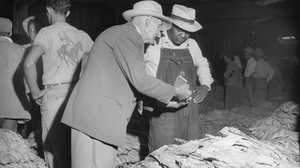Heart in History

10,000-8,000 B.C.E.
The heart symbol, the popular icon for the heart, can be traced to before the last Ice Age. Cro-Magnon hunters in Europe use the symbol in pictograms, though it remains a mystery exactly what meaning it held for them. The symbol will not become universal until the Middle Ages.
2,500-1,000 B.C.E.
The Egyptians believe the heart, or the ieb, is the center of life and morality. Egyptian mythology states that after death, your heart is taken to the Hall of Maat, the goddess of justice. There your heart is weighed against the Feather of Maat. If your heart is lighter than the Feather, you join Osiris in the afterlife. If you fail the test on the scales, then the demon Ammut eats your heart, and your soul vanishes from existence.
400-200 B.C.E.
Ancient Greeks hold the heart to be the center of the soul and the source of heat within the body. They also make some clever medical assertions. Scholars and physicians such as Hippocrates and Aristotle see the connection between the heart and lungs and seem to be aware of its pumping action.
43 B.C.E.-17 C.E.
The ancient Romans understand that the heart is the single most vital organ in sustaining life, as evidenced in the following quote from the Roman author, Ovid. "Although Aesculapius himself applies the herbs, by no means can he cure a wound of the heart." Aesculapius is the Greek deity of medicine and healing.
130-200
Perhaps the most important of all classical physicians, Claudius Galenus, known as Galen, is the personal physician to the Roman emperor Marcus Aurelius. Though much of what Galen believes is incorrect (he fails to understand circulation, for example), he makes several important observations concerning the heart, including the description of valves and ventricles and the differences between veins and arteries.
100-900
Early Americans recognize the importance of the heart. The Teotihuacan culture in ancient Mexico believes that every human being contains several different spiritual forces. Most of these may leave the body at certain times, such as when one is dreaming. However, the teyolia, the spiritual force that is associated with the heart, must remain within the body at all times, or the person will die.
1000-1400
The image of the heart becomes very important in Christian theology. The Sacred Heart, which is usually seen emitting ethereal light and suffering from wounds, is seen as a symbol for Jesus Christ and his love. Devotion to the Sacred Heart reaches a high point in the Middle Ages, where it is seen in works of art and is mentioned constantly in prayers and doctrine. It remains an icon even today.
1000-1400
During the Middle Ages, the methods of Galen and other ancient physicians are strictly followed, and there are no new medical advances concerning the heart. Culturally, the heart begins to grow in its meanings. The heart icon becomes a major symbol for medieval heraldry, where it is used to signify sincerity and clarity. In art and chivalric literature, the heart is increasingly seen as synonymous to the Holy Grail. In fact, early decks of playing cards even use the Grail instead of the heart symbol as an icon.
1500-1600
Scholars begin to question accepted views of the heart. Scholars and physicians such as Andreas Vesalius, the father of modern anatomy, and Michael Servitus make several key observations about the anatomy of the heart, while Leonardo da Vinci becomes the first artist to draw a truly accurate sketch of the organ.
1628
William Harvey publishes "An Anatomical Study of the Motion of the Heart and of the Blood in Animals," which details for the first time the idea of circulation and how blood travels throughout the body, propelled by the pumping of the heart. The idea is a major breakthrough and will revolutionize the way the world thinks about the human body.
1651
A freak accident leaves the son of an English aristocrat with a gaping hole in his chest. This allows people actually to look inside his chest to observe the heart, and even reach in and touch it, if they so desire (King Charles I of England did). Several physicians examine the young man, including William Harvey. As unlikely as it seems, the young nobleman appears to have lived a perfectly healthy life despite the permanent wound.
1700
The Western cultural idea of the heart has taken on innumerable meanings. It is the center of all functions, feelings, and thoughts. It is the seat of the soul and the center of courage and intellect, the "Prince of all Bowels." Arguably, the heart is the single most important word in the human language referring to the mind and the body.
1810-1820
Physicians attempt to operate on the heart, specifically on the pericardium. One of Napoleon's surgeons, the Baron Dominique Jean Larrey, performs the first such operation. Despite the successful surgery on the pericardium, the patient dies within a month. A few other physicians, such as Francisco Romero and Michael Skielderup, attempt similar operations. Most of the patients die.
1750-1850
The popular icon of the heart continues to be important in many cultures. In the Voodoo religion, the heart becomes the symbol of Erzulie, the loa of love, beauty, and purity. In Africa, the Asante people of Ghana develop Adinkra, the hand-embroidered cloth that represents social thought and Asante beliefs. The heart icon becomes a major Adinkra symbol, representing love and closely resembling the symbol for wisdom.
1882
Simplacio Del Vecchio exhibits a dog with a sutured cardiac wound before the 11th International Medical Congress in Rome. Del Vecchio shows the Congress how the suturing is possible and proves that the heart is more resilient than previously believed.
1883
"A surgeon who tries to suture a heart wound deserves to lose the esteem of his colleagues," states leading German surgeon Theodor Billroth.
1890s
Various surgeons attempt heart operations. Physicians such as Henry Dalton and Daniel Hale Williams successfully suture cardiac wounds, and though there is a 90% mortality rate throughout the period, innovators see these and other successful operations as hope for the future. The majority of the medical community disagrees.
1896
"Surgery of the heart has probably reached the limits set by Nature to all surgery. No method, no new discovery, can overcome the natural difficulties that attend a wound of the heart," believes English surgeon Stephen Paget.
1910
In an address to the American Surgical Association, Alexis Carrel discusses the innovative idea of shunt procedures between chambers of the heart. His experiments with animals are the precursor to the bypass operations of modern surgery, including the Blalock-Taussig shunt.
1925
Dr. Henry Soutter saves the life of a young girl with a successful heart operation. However, the medical community ridicules the procedure. Soutter is never able to repeat the operation.
1938
August 28: Dr. Robert Gross performs the first major operation on the vessels near the heart in an attempt to repair a defect in a young girl's pulmonary artery. This is the first operation of its kind, and it causes a sensation in the newspapers. Doctors around the world take notice. The era of modern cardiac surgery has begun.
1944
November 29: Alfred Blalock, helen Taussig, and Vivien Thomas work together to save "blue babies," children with a fatal heart defect. The operation causes a sensation, and announces to the world that heart surgery has arrived as a viable option, not just a rare last resort. After the blue baby operation, the practice of cardiac surgery spreads like wildfire.
1939-1945
The leap in modern medicine owes much to World War II. Doctors are forced to adapt and improve their methods under wartime conditions, and pioneer improvements in anesthesia, antibiotics, and blood transfusions. Several surgeons, such as Dwight Harken, attempt to operate on heart wounds, sometimes even successfully. These advances help pave the road towards modern cardiac surgery.
1950s
The publicity about heart disease is as prominent as that of AIDS today. Heart disease is revealed as the number one killer in the country, Presidents Harry Truman and dwight Eisenhower repeatedly speak out in favor of fundraising, February is named National Heart Month, and the American Heart Association is formed, all within a few years.
1950
Dr. Bill Bigelow experiments with lowering the patient's body temperature, thus slowing down all the vital organs. This provides a way for surgeons to get into the heart without the patient bleeding to death. A surgeon may have as long as ten minutes to operate before the patient begins to suffer from oxygen deprivation, whereas previously, the surgeon would have been lucky to have four minutes.
1952
September 2: At the University of Minneapolis Hospital, Dr. John Lewis, assisted by Dr. Walter Lillehei, performs the first successful open heart surgery. Using the hypothermic, lowered-body-temperature approach, they suture a hole in the heart of Jacqueline Johnson.
Late 1950s
Doctors rush to develop a heart-lung machine, which will take over the vital functions of the body, hence allowing a surgeon an unlimited amount of time to operate. The first successful machine, built by John Gibbon in 1953, is bulky and unwieldy. Improvements continue to appear consistently after the 1950s.
1950s and 1960s
Cardiac surgeons become the celebrities of the field. Several, such as Walter Lillehei and Henry Bahnson, live up to the "work hard and play hard" mentality. Denton Cooley becomes a legend in Texas before he is 35. Christiaan Barnard is seen dating such beautiful women as Sophia Loren.
1967
December 3: In Cape Town, South Africa, Christiaan Barnard removes the healthy heart of a dead woman and transplants it into the chest of 55-year old man. The operation makes newspapers' front pages around the world, making a star out of Barnard.
1970s
Pre-1970, the majority of heart transplants end in disaster because the patient's bodies reject the new organ. Thanks largely to the work of Dr. Norman Shumway, surgeons learn to minimize transplant rejection. A procedure is developed to monitor the process of heart rejection. A new drug, cyclosporin, prevents organ rejection without damaging the immune system. Soon, the only problem with heart transplants is that there are not enough donor hearts.
1998
Michael DeBakey implants a battery-powered heart. Though experiments had been performed since the mid-1950s and the nation watched several successes in the 80s, only DeBakey's success leads the world to think that artificial hearts are the way of the future.







